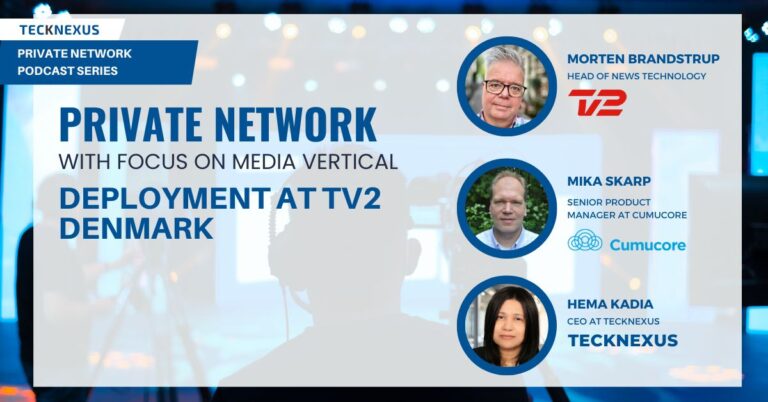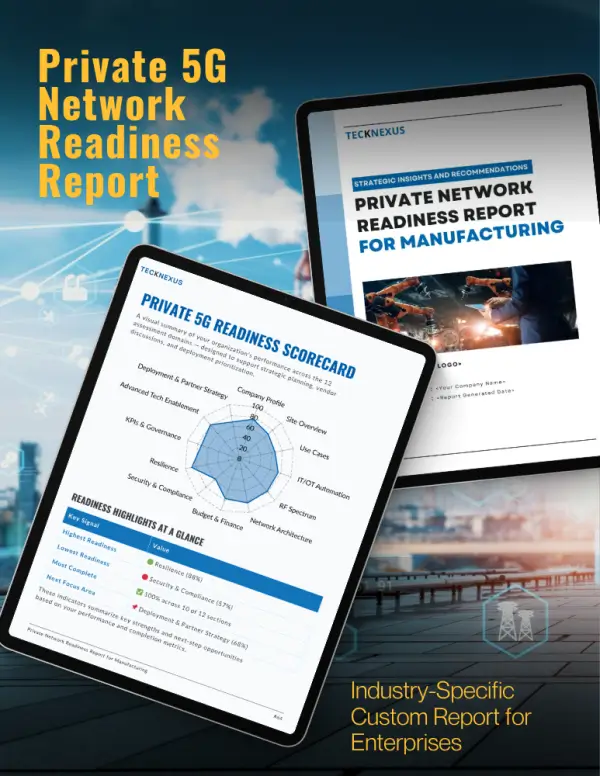Join host Allen Proithis, CEO of GXC, and special guest Dean Bubley, Director of Disruptive Analysis, as they explore the complex world of private 5G networks in the US and UK. This episode examines how spectrum management and technological evolution compare between the two regions, reviews current uses, and forecasts future applications. Tune in to uncover key insights into the dynamic landscape of private cellular and its expanding role in global connectivity.
Introduction to the GXC Monday Mashup
Speaker: Alan Proithis
Welcome to GXC’s Monday Mashup, a podcast that gives you an inside look at GXC, our private cellular network platform, GXC Onyx, and the latest industry news to enable a world where enterprises can trust wireless connectivity to be simple. Hello, and welcome to GXC’s Monday Mashup. I’m your host, Alan Proithis. And today, we’re thrilled to have with us Dean Bubley from Disruptive Analysis. Dean, welcome to the show.
Speaker: Dean Bubley
Hi there. Thanks for inviting me on.
Speaker: Alan Proithis
Dean, you’re one of the most exciting people when I open my LinkedIn in the morning. I’m always excited to see what you have to say about the latest and greatest, because I admire your perspective. You’re not afraid to share strong opinions out there in the world, so thank you for that.
Speaker: Dean Bubley
Thank you. Yeah, I’ve always had opinions. To be honest, when I set up my company, I called it Disruptive Analysis. Lots of people nodded in recognition of the fact that I usually threw questions or came up with different angles on things.
Dean Bubley’s Path to Becoming a Leading Tech Analyst
Speaker: Alan Proithis
I think it’s fantastic in a world where people are afraid to share their thoughts so strongly. Speaking of which, most people don’t wake up and say, “When I grow up, I want to be an analyst.” I know your educational journey started in a different place. How did you end up in this business?
Speaker: Dean Bubley
Well, to be honest, I started off as a university graduate or undergraduate looking at careers. At the time, there were a lot of presentations on campus about strategy consulting— all the usual big names. That sounded really interesting. So I joined a company that was half strategy consultancy and half market research at the time. It was a company called Data Monitor, which later got acquired by Informa, and I was employee number seven. This was back in, it must have been about 1991.
My first role was looking at different industries as a consultant— everything from banking to petrochemicals to cold storage warehouses, and then telecoms and network equipment in particular. I ended up being the chief analyst in the technology practice during the dotcom boom. I remember doing a project in 1993 or 1994 for an online services company. It was during that time when we asked, “Have you seen this thing called the internet?”
So, it’s been a long journey coming from that consulting background. I realized that my tech side was more aligned with companies that called themselves analyst firms. I was there until about 2000, and then I became a stock analyst for a couple of years during the deflation of the bubble. I spent two years saying, “Sell, sell these ones first!” Then, I set up my own company called Disruptive Analysis. I mostly work on my own but collaborate with consulting individuals or companies like STL Partners and others. A lot of my free-to-air content, whether on LinkedIn or video podcasts, is all me. So, there’s a bit of background.
Private Wireless Evolution: Over Two Decades of Development
Speaker: Alan Proithis
That’s a fantastic journey. It’s funny, you’d be hard-pressed to name a market research company that hasn’t been acquired in the last 30 years. Industries seem to consolidate over time, and especially market research. But how are things going for private wireless, especially in the North American and European markets?
Speaker: Dean Bubley
It’s one of those things. I saw my first private network small cell in 2001. In fact, this was when I was a stock analyst, and one of my coverage stocks owned IP Access, which made one of the early 2G Pico cells. To some extent, this has been a long journey for over 20 years. Recently, it’s come into more prominence, partly because of easier spectrum access for enterprises and local deployments. Industrial transformation with new technologies has raised awareness, and there’s also the supply side, with companies like yours and others working on private networks, small cells, core networks, and software components. So, it’s accelerating, though not uniformly.
In North America, particularly the US, there was a massive spike—arguably hype—around 2020 to 2021. In the UK, it’s been more linear, with steady progress. Heathrow Airport, for example, has had a private 4G network since late 2015. Use cases like public safety, military, and oil and gas have been around for many years.
Comparing US and UK Private 5G Spectrum Strategies
Speaker: Alan Proithis
I hear you. There’s usually that early adopter spike, followed by more gradual adoption. Part of that is maturity. What do you think accounts for the difference in adoption between regions? Is it spectrum allocation and regulation? Something else? The use cases?
Speaker: Dean Bubley
I think spectrum makes a big difference. In the US, CBRS certainly brought together suppliers, interest, and political influence. The UK had a longer but slower trajectory. We had low-power GSM spectrum available around 2006 or 2007 in the DECT guard band, with early deployments for that. Japan and the Netherlands had similar approaches.
The spectrum availability has grown globally. While it’s fragmented, there’s been more effort in harmonizing bands, like the 3.8 to 4.2 GHz range in Europe. The US, with CBRS, is big enough to set its own course. China has its quasi-private network model, where mobile operators and their spectrum are involved.
But that might change over time. So, the approach has been fragmented, but interest in spectrum-sharing mechanisms is growing, whether it’s dynamic, like CBRS, or more administrative, as seen in Germany, the UK, and other European countries.
There’s also been a slow growth in awareness in different industrial sectors. Airports, shipping ports, and mining have known about this technology for a long time. Manufacturing has had a longer lead time because they don’t do anything quickly—they test everything out and then it gets rolled out to the next factory they build. However, some unexpected sectors, like broadcasting and defense, have been rapidly adopting private networks in the last year and a half. So, there’s both a demand and supply side. I’ve seen some overinflated forecasts, but the interest is real and growing.
Driving Private 5G Use Cases Across Different Industries
Speaker: Alan Proithis
That’s true. We are seeing a lot of energy in this space. CBRS in the US has been really helpful because it makes launching networks easier, especially with the recent changes allowing broader use. But it’s funny—the US was more LTE-focused until recently, while Europe was purely 5G from the start. Now, we see the US catching up on 5G. To me, it seems like a combination of use cases and spectrum allocation. How do you see that trend?
Speaker: Dean Bubley
Well, CBRS came out with LTE products available as Band 48, and they were in some existing devices or roadmaps, so it was adopted quite quickly for LTE. Elsewhere, the approach varied. Early applications in other parts of the world used LTE as well, but for some bands like the 3.8 to 4.2 GHz range, there wasn’t any 4G equipment available. Early deployments in Europe, like in Finland and the UK, used 2.3 GHz, and there was some 2.6 GHz in France and 1.8 GHz in the UK and the Netherlands.
But most deployments are now focused on the 3.8 to 4.2 GHz range. When the UK first talked about it, cellular operators didn’t expect much— they thought there wouldn’t be any devices for those bands. Now, they might regret that position, seeing the ecosystem that’s emerged around private networks in that band. That’s certainly led to more 5G deployments.
Another factor is the 5G core, which took a while to standardize and become reliable, with enough expertise to deploy and operate it. Now, it’s catching up.
How Operators Impact the Private 5G Ecosystem Globally
Speaker: Alan Proithis
Yeah, it’s a different beast altogether. And depending on the architecture—whether you pick GnodeB or O-RAN—it drives different outcomes too. It has taken time, but it seems like the industry is finally getting there. You mentioned mobile network operators earlier. This technology, of course, comes from that world, with standards set by 3GPP. Yet, the role of operators in private networks seems to vary widely by geography. People often ask, “Shouldn’t operators be the main driver of this?” What’s your take on that?
Speaker: Dean Bubley
It’s variable by geography, and it’s not just about mobile operators. Fixed operators also play in private networks, often focusing on enterprises. It tends to be operators with an enterprise business unit that do well in this space, which usually means the top one or two mobile operators in a country. Fixed operators often have a systems integration business, sometimes a federal systems business, or specialized units in sectors like transport, healthcare, or broadcasting.
It’s common for operators that have B2B teams with a level of autonomy to do well. They can move faster than their broader organization, which is more focused on wide-area mobile. Sometimes, they have different vendor choices. It reminds me of 20 or 30 years ago, when people were talking about PBXs for enterprise voice switching—those were provided by the B2B unit, separate from the telephony infrastructure, because there was money to be made. The same thing is happening now. If enterprises want something quickly and the operator doesn’t offer it, they’ll go elsewhere. Those operators that respond are the ones doing well.
One example is Verizon. In the UK, Verizon provides private 5G for the Port of Southampton, but Verizon UK doesn’t have a mobile network—it’s a fixed and enterprise business. They bought a fiber company years ago, and that’s what they use.
Key Use Cases Fueling the Growth of Private 5G Networks
Speaker: Alan Proithis
That’s fascinating. We’ve talked about verticals and markets, but let’s talk use cases for a second. One thing we’ve seen is that companies are still getting their heads around private wireless. They may start by solving a specific problem—like low-data applications around a scanner, forklift, or tablet with a corporate app—but once they realize they’re not paying by the gig or SIM card, the use cases broaden. What do you see driving adoption out there?
Speaker: Dean Bubley
I’d say anything with a camera and anything that moves—those are the two overriding categories. Connected vehicles, robots, AGVs (automated guided vehicles), perimeter security, drones for inspections, production line cameras to detect defects, or even outdoor operations like an opencast mine, airport ramp, or port. These areas cover large distances, making Wi-Fi impractical, especially over expanses of water.
Video uplink applications and moving equipment are key drivers. It’s funny—when you mention anything involving video, 5G becomes essential. LTE might be fine for basic tasks, but more and more people are realizing that for future-proofing and higher performance, 5G is the way to go.
Speaker: Alan Proithis
Yeah, we’ve seen that too. People are increasingly saying, “If we’re going to do this, let’s just go 5G.” There are more devices now, and it gives them a bit of future-proofing. But we still see some 4G use cases around. Are they still relevant?
The Importance of Uplink and New 5G Use Cases
Speaker: Dean Bubley
Yes, 4G use cases are still around, especially for basic applications. However, they don’t get as much attention since they’re seen as more standard and not worth press releases.
One important factor is the uplink. This is critical for applications requiring remote control, especially when third parties are involved. For example, with a drone and camera, you’ve got the drone pilot, a remote expert, and perhaps someone else guiding the process in real-time. It’s a complex scenario requiring reliable uplink.
Speaker: Alan Proithis
That’s a great point. We recently did a deployment for drone-based construction equipment for exactly that use case. They initially tried Wi-Fi, setting up dozens of access points, but it was a nightmare to maintain and didn’t hold a connection over large areas. Private wireless was a perfect solution. It allowed for autonomous operation of the equipment, but with the ability to take control when necessary. We’re seeing more of this, especially with the focus on automation.
Speaker: Dean Bubley
Yeah, one of the things that often gets misrepresented is the comparison between future 5G versions and older Wi-Fi versions. People compare 5G Release 16 with Wi-Fi 5, which isn’t a fair comparison. It should be 5G against Wi-Fi 6E or 7, with enough spectrum for a proper comparison. For indoor use, Wi-Fi will still have a strong presence, even in sophisticated deployments. The challenge is how to manage the coexistence of different technologies within an application or some middleware layer.
Speaker: Alan Proithis
Absolutely. Everything has its place. We envision a world where future Wi-Fi and cellular versions will coexist, each doing what they do best in specific circumstances. Speaking of the future, Dean, I’d be remiss not to ask you, as a futurist, what you see happening in the next year or two in private wireless. What are the biggest developments we should expect, and how fast do you think things will move?
What to Expect in the Next Phase of Private 5G Growth
Speaker: Dean Bubley
The first trend I see is one you touched on earlier—people adding more applications and devices onto existing networks. There’s this rather clumsy term, “application stacking,” which is basically taking an existing private network and expanding it to cover more buildings on a campus or adding more mission-critical applications.
Another significant trend is the rise of neutral hosts, where private networks are used for indoor public network coverage. There are different ways to handle indoor connectivity for public services—distributed antenna systems (DAS) that repropagate carrier frequencies or complete private networks that can break out to operator cores. The approaches differ depending on geography. In North America, it’s more common to see neutral host models, while in the UK and Germany, it’s currently not allowed to run public services over private networks, though that might change.
In the US, several companies are experimenting with models like Multi-Operator Core Networks (MOCN) and gateways that blend private networks with DAS for safer visitor connectivity. A challenge here is onboarding visitors, even with eSIM technology. You don’t want to force people to download eSIMs with QR codes and then have a help desk when it doesn’t work. The user journey is something to consider.
Speaker: Alan Proithis
We’ve got mixed feelings about MOCN, mainly due to some inherent limitations with CBRS and challenges in working with US operators. But there’s definitely potential with DAS and private 5G, and we’ll have some exciting developments to share later this year. At the end of the day, people want their phones to work wherever they are, whether it’s inside an office, a mall, or a hospital, and it needs to be low friction. No one wants to scan a QR code every time they walk into a new place.
Speaker: Dean Bubley
Exactly. And by the time those issues are resolved, it’s possible that Wi-Fi with open roaming or Passport may be more widely adopted. There are always multiple technical solutions in play, and the one that wins will be the one that nails the user experience, commercials, and support. In the end, we might see a mix of different approaches.
Speaker: Alan Proithis
Yes, it’s always amusing how many people still struggle to connect to Wi-Fi in a restaurant. But, Dean, this has been a fantastic conversation. Before we wrap up, please share with our audience how they can learn more about you and the services you offer. And of course, how they can follow your incredibly insightful posts.
Where to Follow Dean Bubley
Speaker: Dean Bubley
Thank you, Alan. The easiest way is to follow me on LinkedIn—just search for Dean Bubley,. I post regularly there, and I also have a newsletter with longer-form pieces. My website, deanbubley.com, has more details about my speaking, consulting, and advisory services, though I admit I don’t update it as often as I should. But feel free to drop me a line on LinkedIn—that’s the easiest way to reach me.
Speaker: Alan Proithis
Fantastic. Dean Bubley from Disruptive Analysis, thank you again for joining us today on Monday Mashup.
Speaker: Dean Bubley
Thank you.


















